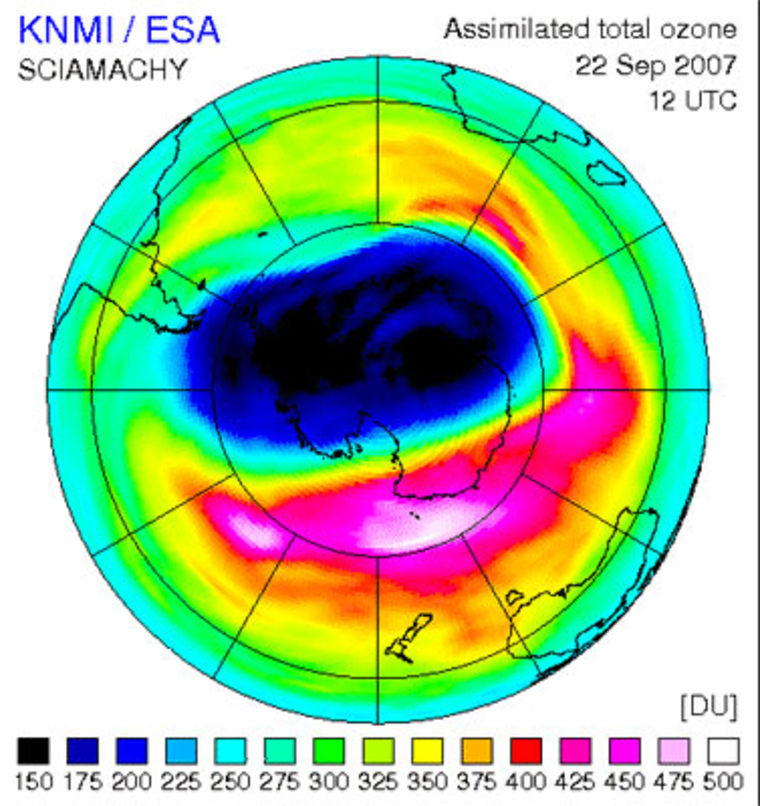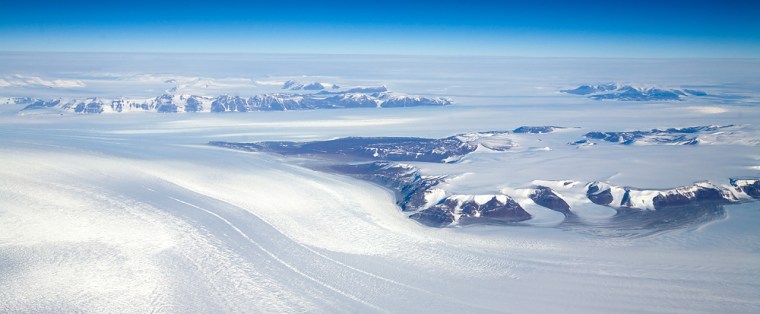Be careful — be very careful — when tinkering with Mother Nature. That's the lesson from two new studies that involve climate change, ozone holes, the Arctic and Antarctica.
One study warns that the idea of "geoengineering" a warming solution by injecting sulfur compounds into the air could wipe out the Arctic ozone layer and delay recover of the Antarctic ozone hole by as much as 70 years.
The other study warns that recovery of the ozone hole over Antarctica — a recovery helped by a global ban on CFCs and one required to shield humans from radiation — will trigger warming in Antarctica's interior, an area now protected by a cooling effect from the ozone hole.
In the sulfur study, researchers tested the notion that one could reduce temperatures by increasing clouds and haze that would reflect sunlight. The reasoning is that when volcanoes spew lots of sulfur, months or more of cooling often follows.
“Our research indicates that trying to artificially cool off the planet could have perilous side effects,” said Simone Tilmes of the National Center for Atmospheric Research in Boulder, Colo.
“While climate change is a major threat, more research is required before society attempts global geoengineering solutions,” said Tilmes, lead author of a paper appearing in Thursday’s online edition of the journal Science.
Mimic Mount Pinatubo?
The idea of reversing global warming by injecting sulfates into the air was suggested by eruptions such as the 1991 blast by Mount Pinatubo in the Philippines, which produced a brief cooling.
The massive 1815 eruption of Tambora in what is now Indonesia produced such a strong cooling that 1816 became known as the “year without a summer” in New England, where snow fell in every month of the year.
But Tilmes knew that volcanic eruptions also temporarily thin the ozone layer, which protects people, plants and animals from the most dangerous ultraviolet rays from the sun.
So she and colleagues calculated the effect of suggested sulfate injections and concluded that the result, over the next few decades, would be to destroy between one-fourth to three-fourths of the ozone layer above the Arctic. This would affect a large part of the Northern Hemisphere because of atmospheric circulation patterns, they said.
The sulfates would also delay the expected recovery of the ozone hole over the Antarctic by about 30 to 70 years, or until at least the last decade of this century, they said.
“This study highlights another connection between global warming and ozone depletion, which had been thought of as separate problems but are now increasingly recognized to be coupled in subtle, yet profoundly important, ways,” said study co-author Ross Salawitch of the University of Maryland.
The research was supported by the United Kingdom Meteorological Office, University Corporation for Atmospheric Research and NASA.
Ozone hole cooled Antarctica's interior
In the Antarctica ozone hole study, experts found that a full recovery of the ozone hole could modify climate in the Southern Hemisphere and even amplify Antarctic warming.
The findings come from scientists at the University of Colorado at Boulder, the National Oceanic and Atmospheric Administration and NASA. Their paper is scheduled for publication in the peer-reviwed Geophysical Research Letters.

Although temperatures have been rising worldwide, there has been cooling in the interior of Antarctica in summer, which researchers attribute to the depletion of ozone overhead.
“If the successful control of ozone-depleting substances allows for a full recovery of the ozone hole over Antarctica, we may finally see the interior of Antarctica begin to warm with the rest of the world,” said Judith Perlwitz of the Cooperative Institute for Research in Environmental Sciences, a joint institute of CU-Boulder and NOAA.
The authors used a NASA supercomputer to model interactions between the climate and stratospheric ozone chemistry. A return to pre-1969 ozone levels would mean atmospheric circulation patterns now shielding the Antarctic interior from warmer air to the north will begin to break down during the summer, they concluded.
Humans tied to wetter Arctic
Meanwhile, in a separate paper in Science, researchers said human activities are at least partly responsible for the Arctic having become a wetter place over the last half century.
Seung-Ki Min of Environment Canada, and colleagues, studied rain and snowfall patterns in the arctic and the factors affecting them.
They concluded that human-induced greenhouse gases have contributed to the increased precipitation rates observed in the Arctic region over the past 60 years.
They warned that this “Arctic moistening” could occur more quickly than current climate simulations indicate.
Their work was supported by the U.S. Department of Energy and the Canadian International Polar Year Program.
